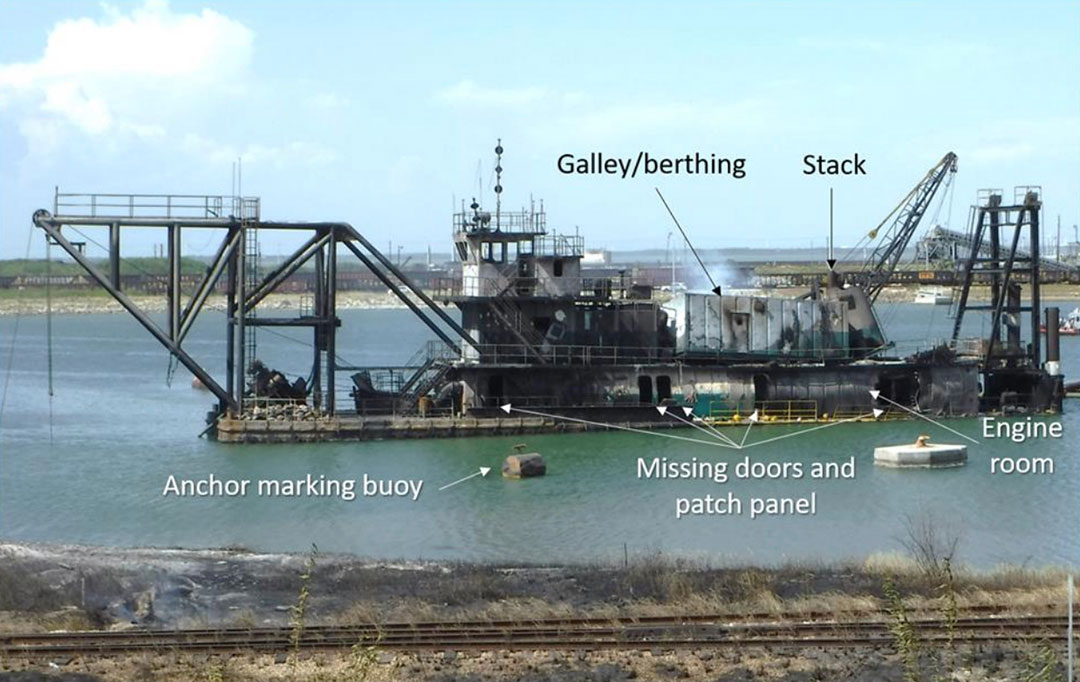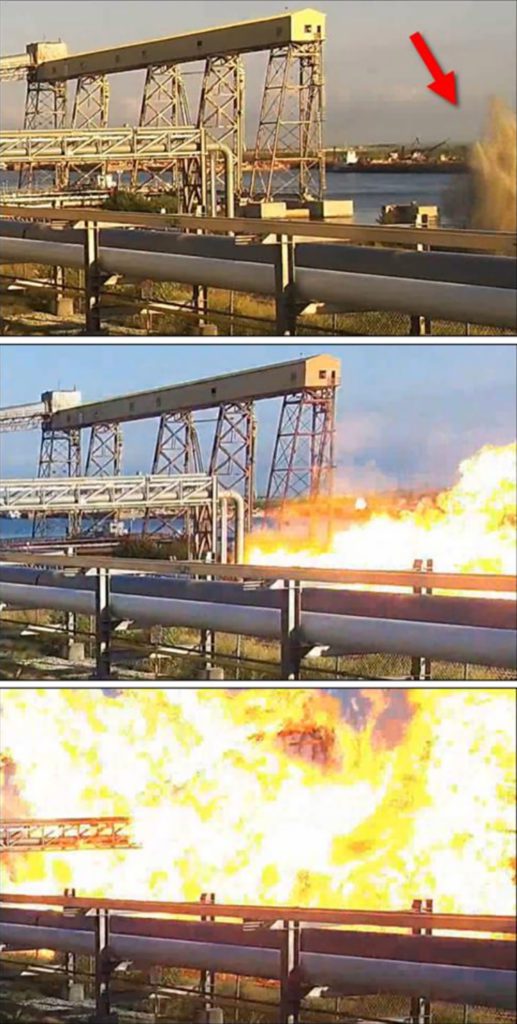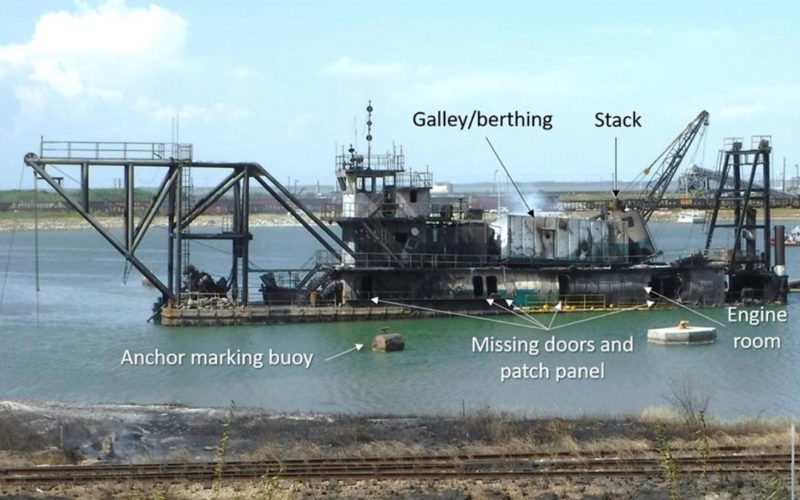
Federal investigators identified poor planning and insufficient risk management as leading factors in the deadly August 2020 dredge explosion in Corpus Christi, Texas.
The cutterhead on the 152-foot dredge Waymon Boyd struck a submerged liquid propane pipeline at about 0800 on Aug. 21, 2020, while dredging in the Corpus Christi Ship Channel. The gas ignited, causing an explosion that ultimately killed five crewmembers and injured five others, the National Transportation Safety Board (NTSB) said.

The NTSB determined dredge operator Orion Marine Group’s inadequate planning and risk management processes were primary factors in the incident. Specifically, the agency said the company improperly identified the pipeline’s proximity to the dredge site, and had ineffective internal controls that left the error unchecked.
Deficient dredging plans produced by Schneider Engineering and Consulting contributed to the incident, the NTSB found.
“Knowing that the pipeline was near the dredging area, Orion and its design engineers should have taken measures before dredging started to address the risk of dredging near the pipelines, including consulting with Enterprise representatives, conducting a formal risk assessment, and implementing effective engineering controls,” the NTSB said in its report. “They did none of these.”
Waymon Boyd and its support vessels were operated by Orion Marine Group of Houston. Schneider Engineering and Consulting, a sister company to Orion Marine, produced the dredging plans. Enterprise Products owned pipeline TX219, which was damaged by the incident.
Waymon Boyd was working to dredge material from the Corpus Christi Ship Channel to make room for a new berth at the EPIC Marine Terminal in the Port of Corpus Christi. The leverman was operating the vessel on its prescribed path when it hit the pipeline, causing an eruption of water and gas. Waymon Boyd’s engine room ventilation system drew the gas fumes into the space, where they ignited about 66 seconds after the pipeline ruptured.
The explosion caused a tremendous sound, and witnesses said it shook the ground before engulfing the dredge in flames. Waymon Boyd sustained extensive internal damage, particularly to its engine compartment in a manner suggesting an explosion from within. The NTSB could not definitively find the source of ignition within the engine space.
There were 18 crewmembers on or near Waymon Boyd at the time of the explosion. The chief engineer, the nightshift leverman and the cook were aboard the dredge and died in the blast, the NTSB said. The second engineer, who was standing aboard an anchor barge on Waymon Boyd’s port side, also died. Two deck hands and the mate were seriously burned, and one deck hand died nine weeks later. Three others also were hurt in the blast.
The dredge plan for the project — enlarging an EPIC Crude Terminal Co. berth — was loaded into a dredging software program. However, the pipeline was not marked in the software program used by the leverman aboard Waymon Boyd. As a result, the report said, the leverman did not realize how close the vessel or the cutterhead was to the pipeline.
Incorrect information about the pipeline’s location was circulated between all four key stakeholders in the project. As a result, existing safeguards to prevent against a pipeline strike were unable to prevent the incident. These safeguards include regulations regarding buffers between dredges and pipelines and a Texas one-call system to verify pipeline locations.
“The Schneider Engineering and Consulting plans provided to Orion Marine Group for the EPIC dock project were deficient because they did not clearly depict the extent of the dredging area or the pipeline location in all drawings,” the NTSB report said.
That error “resulted in the Orion Marine Group project engineer misinterpreting the information, overestimating the distance between the dredging area and pipeline TX219, and communicating incomplete and inaccurate information during the one-call process, which dissuaded Enterprise from protecting pipeline TX219 in accordance with the company’s damage prevention program,” the report continued.
The NTSB made new recommendations to the companies involved to implement or update their policies on dredging near pipelines. They also made recommendations to industry groups and a federal regulator to develop guidance about digging near pipelines, specifically in relation to dredging.
“We have seen time and again that tragedies happen when parties fail to have the appropriate policies and procedures in place for safety,” said NTSB Chair Jennifer Homendy. “Orion Marine Group’s inadequate planning led to this tragic event and cost lives. It is absolutely critical that when excavators conduct any dredging operations near underwater pipelines that proper precautions are in place to ensure safety.”
Waymon Boyd, valued at $9.48 million, was destroyed in the explosion. The pipeline sustained more than $2 million in damage, while the EPIC terminal required roughly $120,000 in repairs.
Orion Marine Group did not respond to an inquiry seeking comment on the NTSB findings.

